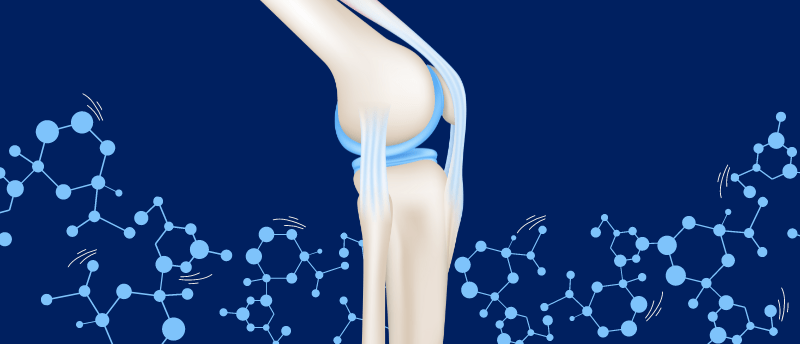The regenerative effects of ‘dancing molecules’ on cartilage

A ‘dancing molecule’ therapy, which was previously used to reverse paralysis after spinal cord injury, has now been applied to damaged human cartilage cells, demonstrating its regenerative effect.
Researchers at Northwestern University (IL, USA) have utilized a previously developed injectable therapy to stimulate cartilage regeneration following cartilage damage. A common condition affecting cartilage is osteoarthritis – a degenerative joint condition. Osteoarthritis is a long-term, painful condition, which cannot be cured; however, the ability to regenerate cartilage could prove an effective treatment for such a condition.
In 2021, the same research group developed this injectable new therapy, demonstrating its potential for reversing paralysis and repairing tissues after severe spinal cord injuries. The team has now turned their attention to healing cartilage damage using the same sort of injectable therapy. According to the World Health Organization, approximately 528 million people globally were living with osteoarthritis in 2019. Osteoarthritis is caused by the breaking down of protective cartilage on the ends of bones, at the joint. It is common and can be severe, causing debilitating pain requiring joint replacement surgery, which is invasive and expensive.
“Current treatments aim to slow disease progression or postpone inevitable joint replacement,” commented study lead Samuel Stupp. “There are no regenerative options because humans do not have an inherent capacity to regenerate cartilage in adulthood.”
The researchers used the same ‘dancing molecules’ concept used previously to stimulate cartilage regrowth. This therapeutic modality relies on the assembly of ‘dancing molecules’ into synthetic nanofibers. These molecules mimic aspects of signaling molecules that allow them to bind to key receptors on the cell surface and can be tuned via their chemical structure to move collectively. Once inside the body, the nanofibers mimic the structure of extracellular matrices surrounding the target tissue, and their motion allows the molecules to rapidly find and engage cellular receptors in a more natural fashion. This mimicry of nature increases the ability of the signaling molecules to communicate with the target cells and stimulate a desired response.
To stimulate cartilage regrowth, the team targeted the receptors of a protein critical for cartilage formation and maintenance, called transforming growth factor beta-1 (TGFb-1), developing a circular peptide that mimics the TGFb-1. This peptide was then incorporated into two different molecules, which interact to form polymers. These polymers have the same ability to mimic TGFb-1; however, one was designed with a structure that facilitated molecular movement and the other polymer was designed with a more rigid structure that restricted molecular movement.
They found that the polymers enabling molecular movement were more effective than the restricted-molecule polymers at stimulating cartilage protein production. “After three days, the human cells exposed to the long assemblies of more mobile molecules produced greater amounts of the protein components necessary for cartilage regeneration,” Stupp reported. “For the production of one of the components in cartilage matrix, known as collagen II, the dancing molecules containing the cyclic peptide that activates the TGF-beta1 receptor were even more effective than the natural protein that has this function in biological systems.”
The team is already working on the next steps: testing their injectable therapy for cartilage regrowth in animals, applying these dancing molecules to bone regeneration and testing the molecules in human organoids. “We are beginning to see the tremendous breadth of conditions that this fundamental discovery on ‘dancing molecules’ could apply to,” concluded Stupp. “Controlling supramolecular motion through chemical design appears to be a powerful tool to increase efficacy for a range of regenerative therapies.”

